GROW UP!
As you may know by now, I am an avid gardener and collector of plants (and garden kitsch). But having a small property here in Knoxville, TN, we eventually begin to run out of room for all the plants we lust for. Once you begin to run out of horizontal space there is only one way to go and that is up. There are tons of reasons to give vertical gardening a go. Space is the most obvious but the other main benefit is the improved health of the plants which I will get to in a bit. But before talking about edible plants, allow me to talk about the aesthetic appeal to plants trained vertically.
One of the first images that may come to mind when thinking of plants and structures is vines. While this may not be everyone’s cup of tea (I can hear you already….”low maintenance!”), I love the look of a well-trained and maintained vine that softens some architecture. Below you can see the front of our house hosting a plant called Boston Ivy. Now this isn’t the nasty invasive English Ivy and it’s not the plant that is so often confused with poison ivy, Virginia Creeper. Our vine (which is high maintenance by the way) is Parthenocissis tricuspidata. I do keep a very close eye on this puppy to make sure it stays confined to the stone and doesn’t start to adhere to the wood siding. I love the way it gives our home a cottagey feel and some subtle age. I wish it turned red in the fall like it does in cooler climates but it does a pretty good job hiding the gutter downspout.
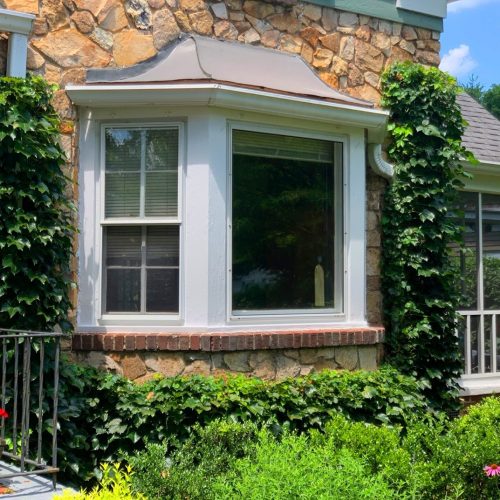
Another horticultural term to let fly here is espalier (It’s French, so leave off that “r”). This basically means “to train against a wall”. I’m giving it shot with two bosque pears we purchased a few years ago. It’s a slow process when you’re training a whip (a single stemmed small tree) but I’m having some fun with it. It’s too early to tell if these will fruit but I’m hoping my wife’s nearby honey bees will lend a hand when they mature a bit more. If you’ve got the cash, you can buy espalier plants ready trained but be prepared for some sticker shock.
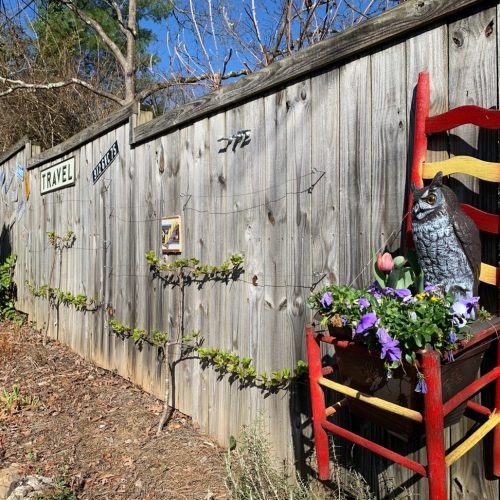
Okay. Now allow talk a bit about production, or veggie gardening as this relates to verticality. Here is where some real benefits of growing up rather than out can easily be seen. When you grow plants on support systems like a trellis or wire mesh supported with the appropriate steel stakes and such, you will undoubtedly improve air circulation around a plant’s leaves and vines. The result is much less in the way of bacterial infections, blight, wilt, powdery mildew, etc. It’s also much easier to spot problems when a plant’s foliage is at eye level rather lying on the ground.
Growing vertically can also help keep some destructive critters like voles and chipmunks at bay. It’s much easier to harvest beans and cucumbers when these are raised rather than bending over and pulling back leaves to find the fruit. In essence, growing vertically puts your rewards on display.
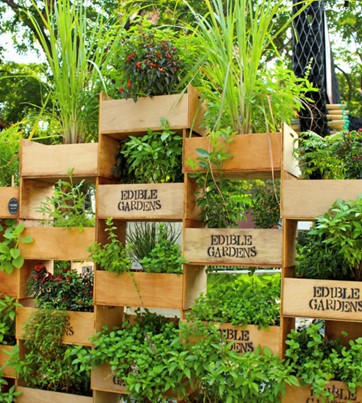
Going back to special challenges, when a squash or cucumber plant is allowed to weave along some wire mesh or a trellis, the square footage that plant occupies can go from about 20 to perhaps 2. Plants that do particularly well with this type of vertical system include pole beans or runner beans, cucumbers and squash, as mentioned. And even small melons if these are additionally supported with some pantyhose or fabric hammocks or such.
Structures:
How you decide to provide structures on to which your plants may climb depends a large part on your budget. These can be as simple as placing some random ladders you might find at garage sales or just heavy duty “hog wire” mesh zip-tied to some steel fence posts or they may be pre-made “official” arbors or trellis structures found at the big box stores. Usually, if you want to save some money, think more along the lines of going to your farmers’ co-op and purchasing some fencing material. The options are so plentiful that I’m pasting a good ol You Tube video here to give you some more ideas:
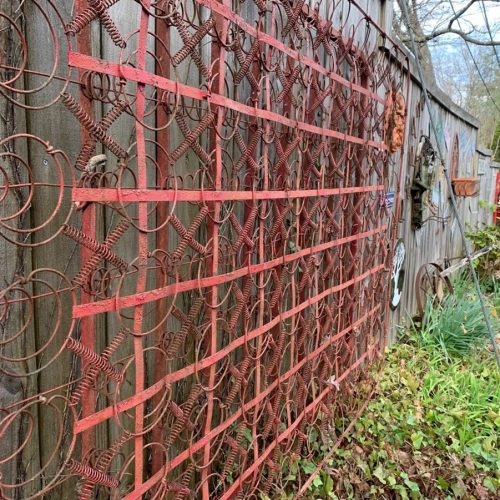
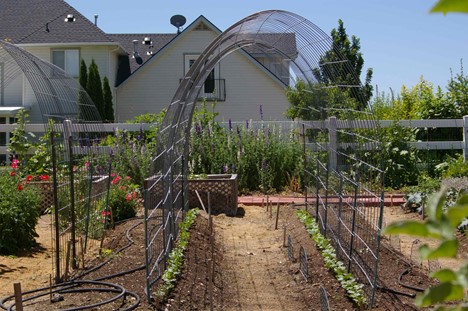
So, no matter your expertise or budget, there are many reasons to “grow up” this spring and summer. Even if you have but a tiny plot of space, implementing a vertically green element into your garden design will add a whole new dimension to your garden oasis.






